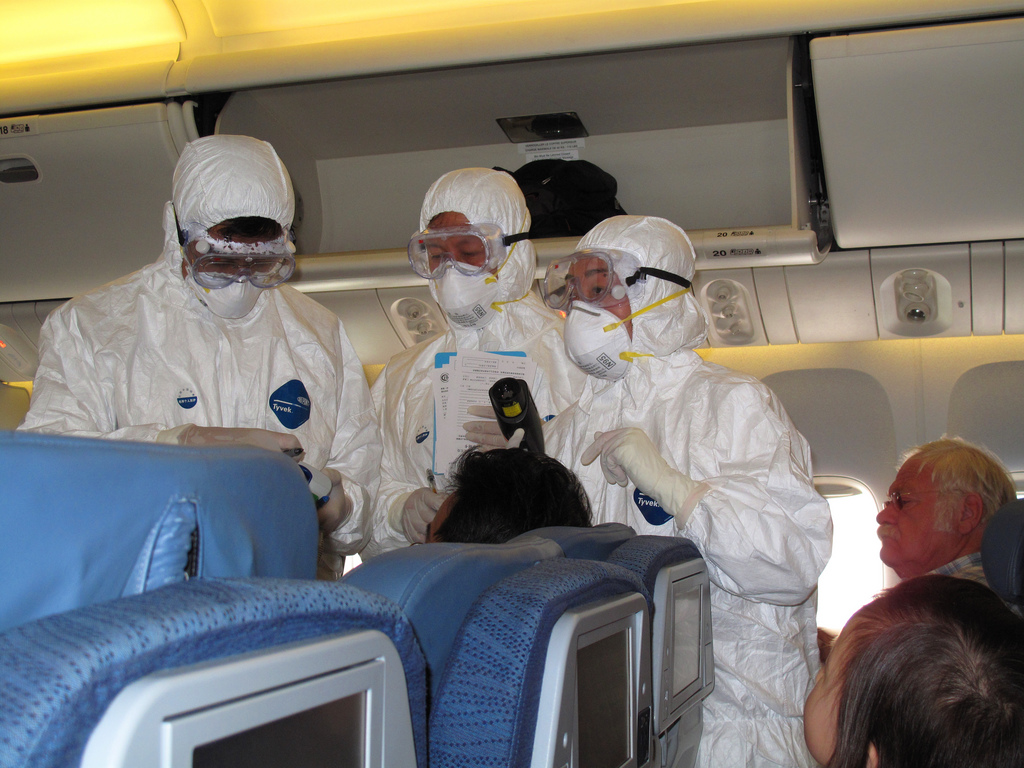
The common perception of the flying public is that airplane cabins represent the perfect incubator for the spread of viruses and contagious diseases. However, recent studies seem to indicate that things aren’t as bad as people think. While the findings will undoubtedly be debated and challenged for a long time to come, they reveal some interesting insights into the movements of viruses in airplane cabins. The question is whether or not they also give us a false sense of security.
Time and Distance
As a general rule of thumb, research indicates that passengers who are infected with viruses can spread them in a 3-6 foot radius. Consequently, those who are seated around a passenger who is sick are at the greatest risk of being infected. Additionally, the chances of becoming infected are exponentially higher when seated near the passenger for prolonged periods of time. On the other hand, people who are near the infected individual in passing or for short periods of time are less-likely to become sick.
While this is good news for those who are seated in other parts of the cabin, a sick passenger can still infect more than 10 people on any given flight. To reduce risk, consider asking to be seated in another part of the cabin if you are afraid that you’re too close to someone who is coughing or sneezing.
Contaminated Surface Myth
There is a lot of debate over whether surfaces such as armrests, windows, seat backs, tray tables and sinks in lavatories can harbor viruses for long periods of time. Unfortunately, there seems to be a trend by airlines and some travel experts to downplay this risk. The general argument is that using cleaning products that are known to kill viruses and sanitize surfaces can protect passengers from contamination. However, there are also studies that show how cleaning products don’t necessarily prevent new pathogens from thriving after being deposited. Consequently, the long-term benefits of a good cleaning is questionable, and it’s important to keep in mind that planes can carry thousands of people before cabins are thoroughly cleaned.
Additionally, it makes no logical sense that surfaces in airplanes are different from ones we come into contact with on the ground. If we’re supposed to be following basic sanitary practices in our everyday lives, then surely we should be doing the same thing on airplanes.
Air Circulation
Another common argument for why airplane cabins are safer than we think is that the air conditioning system filters out viruses on a continual basis. While this is true, and air conditioning introduces fresh air into cabins every few minutes, it’s what happens during the intervening time that should make us concerned. The air moves from place to place and flows around passengers along the way. Consequently, airborne viruses can be transmitted, and nobody really knows how many people can be exposed before they are filtered out.
The bottom line is that while researchers may have come up with ways to better-visualize how viruses spread, the information does little to make us any safer. Consequently, we should always be vigilant when it comes to taking basic precautions for minimizing exposure while flying. Wipe down surfaces with sanitary napkins, frequently-use hand sanitizer, and consider wearing a face mask if seated near a passenger who may be sick. These simple steps can dramatically-minimize the chances of us falling ill as we make our way to our final destination.
